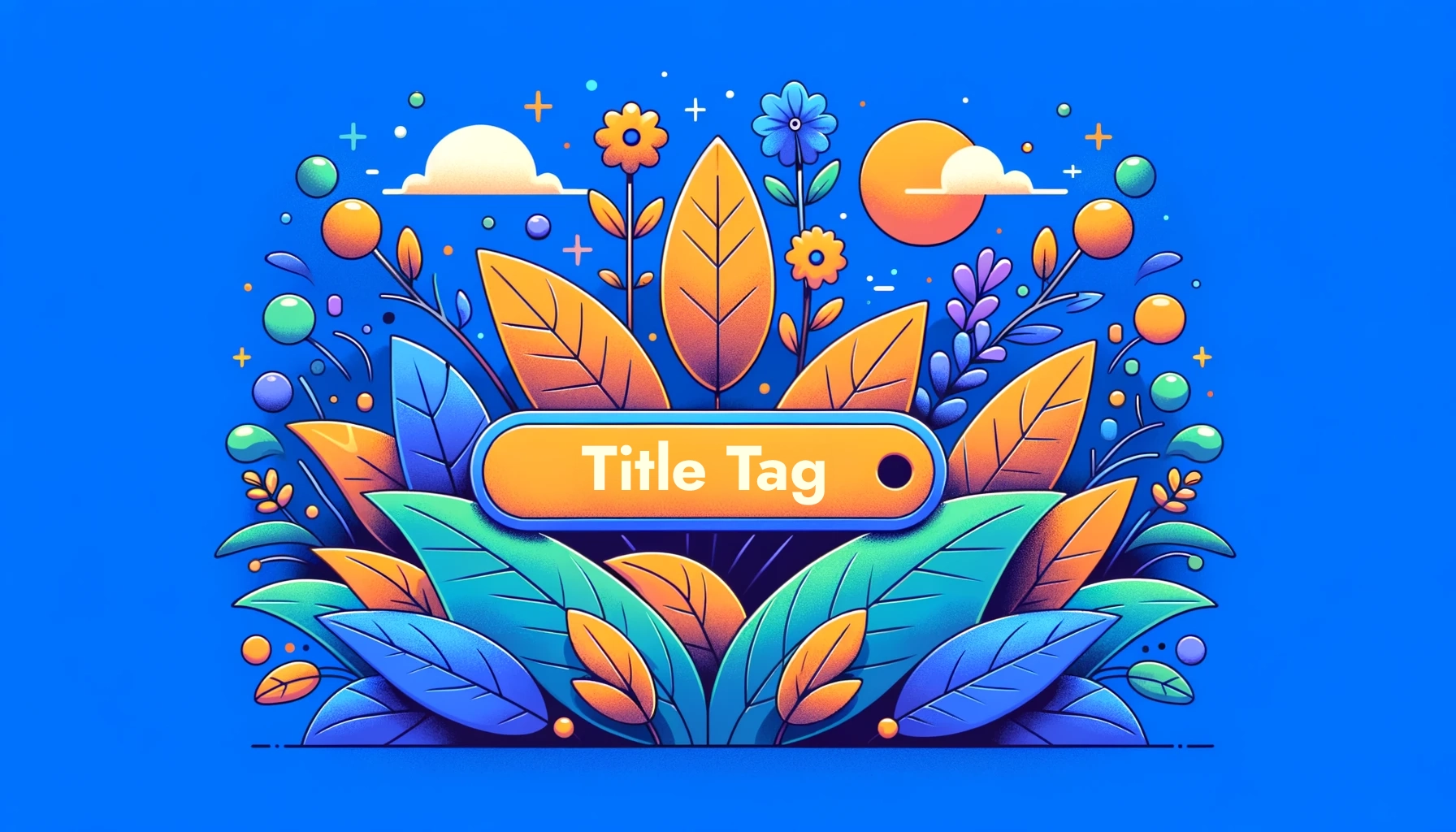Your cart is currently empty!
Title tags are an essential SEO concept. Understanding and mastering how to write them is a great skill for anyone involved with online content, beyond SEO professionals. This quick guide covers the fundamentals of title tags and how to use them.
What is a Title Tag?
A title tag is an HTML element that specifies the title of a web page. Title tags are displayed on search engine results pages (SERPs) as the clickable headline for a given result, and are important for usability, SEO, and social sharing.
Code Example
Title tags must be coded in HTML in the <head> section of the page. This code should be placed within the <head> tags and accurately and concisely describe the page content:
<title>Example Title - Your Brand</title>Importance of Title Tags
These play a huge role in SEO and usability.
- First Impressions Matter: For many users, the tag is the first thing they see related to your website. An engaging and relevant title can entice users to click on your link over others.
- SEO Ranking Factor: While it’s one of many factors, search engines consider title tags when determining page rankings. A well-optimized tag can positively impact your visibility.
- Browser Usability: When users have open multiple browser tabs, the title tag helps them quickly identify and navigate to your webpage.
Title Tag Examples
Let’s walk through good and bad title tags to better understand what works.
Good Title Tags
| Good Titles | Why It’s Good |
|---|---|
| 10 Easy Vegan Recipes for Beginners | Descriptive and concise, directly indicating the content of the page. |
| Digital Marketing Strategies for Small Businesses | Incorporates relevant keywords, making it SEO-friendly. |
| Advanced SEO Techniques | XYZ Digital Agency | Includes brand name for recognition and implies expertise in the field. |
| Men’s Running Shoes | Brand A | Unique and specific, differentiating it from other pages on the same site. |
| Complete Guide to Gardening for Beginners – 2023 Edition | Provides detailed insight with the current year, suggesting updated and relevant information. |
Bad Title Tags
| Bad Titles | Why It’s Bad |
|---|---|
| Los Angeles Bakery | Overly generic and vague, providing no insight into the page’s content. Doesn’t include name of the bakery or other specifics to help the searcher. |
| Buy Shoes, Cheap Shoes, Best Shoes – Jim’s Shoes | Represents keyword stuffing, which is viewed negatively by search engines and unappealing to most searchers. |
| Police Chief Offers Explanation for City Devastation Caused By Spider-Man!!! – The Daily Bugle | Too long, resulting in the main topic, “Spider-Man” of course, getting cut-off before displaying in the search result. |
These examples only demonstrate a small amount of considerations for title tags. Ultimately, you want appealing title tags that use keywords and demonstrate value in the space allotted.
Best Practices for Title Tags
Use these techniques when writing your titles:
Do
- Be Descriptive: Ensure the title represents the content of the page. Users and search engines should understand the page at a glance.
- Keep It Concise: It’s recommended to keep title tags between 50-60 characters to ensure they display correctly in search results.
- Use Relevant Keywords: Place important keywords towards the beginning of the title. However, avoid keyword stuffing – it’s essential to maintain readability and relevance.
- Place Key Keywords at the Start: Search engines and users give more weight to the initial words in the title tag.
- Add Value When Possible: Even if you cover your target keyword, try to use the allotted space, around 60 characters, to communicate as much value as you can to searchers. (Without seeming spammy.)
- Consider Branding: Depending on your branding strategy, you may want to include your brand or company name in the title, typically at the end.
- Avoid Duplicates: Each page on your website should have a unique title tag. Duplicate tags can confuse search engines and dilute the relevance of each page.
Don’t
- Be Vague: Titles like “Home” or “Products” don’t give users or search engines valuable context.
- Overuse Keywords: “Buy shoes, best shoes, cheap shoes, shoe sale” might seem like a way to spam multiple search terms, but it makes for an unappealing listing that likely won’t perform well. Use natural language, not SEO-speak.
- Neglect User Experience: While optimizing for search engines is crucial, ensure your titles are readable and enticing for human users.
Ultimately, you want to create a title relevant to the page and use its allotted space well.
Tools and Resources
There are several tools available to help you craft, analyze, and optimize your tags:
- Moz’s Title Tag Preview Tool: Our favorite title tag tool. Once you have an idea for your title tag, craft them here to understand see how it will appear in Google.
- SERP Simulator: Another option for simulating results in SERPs. However, it’s not as accurate with cutoffs as Moz’s tool, making it a runner-up. Provides more details on the rest of the result than Moz, which can be useful.
- Yoast SEO: A WordPress plugin that helps visualize how your page will appear in mobile and desktop results, essential for any WP site.
Bottom Line
Title tags are a foundational element of a well-optimized website. They influence user click-through rates, search engine rankings, and overall user experience.
Understanding their significance and learning to craft them effectively can significantly enhance your website’s visibility and performance. ?
Topics






